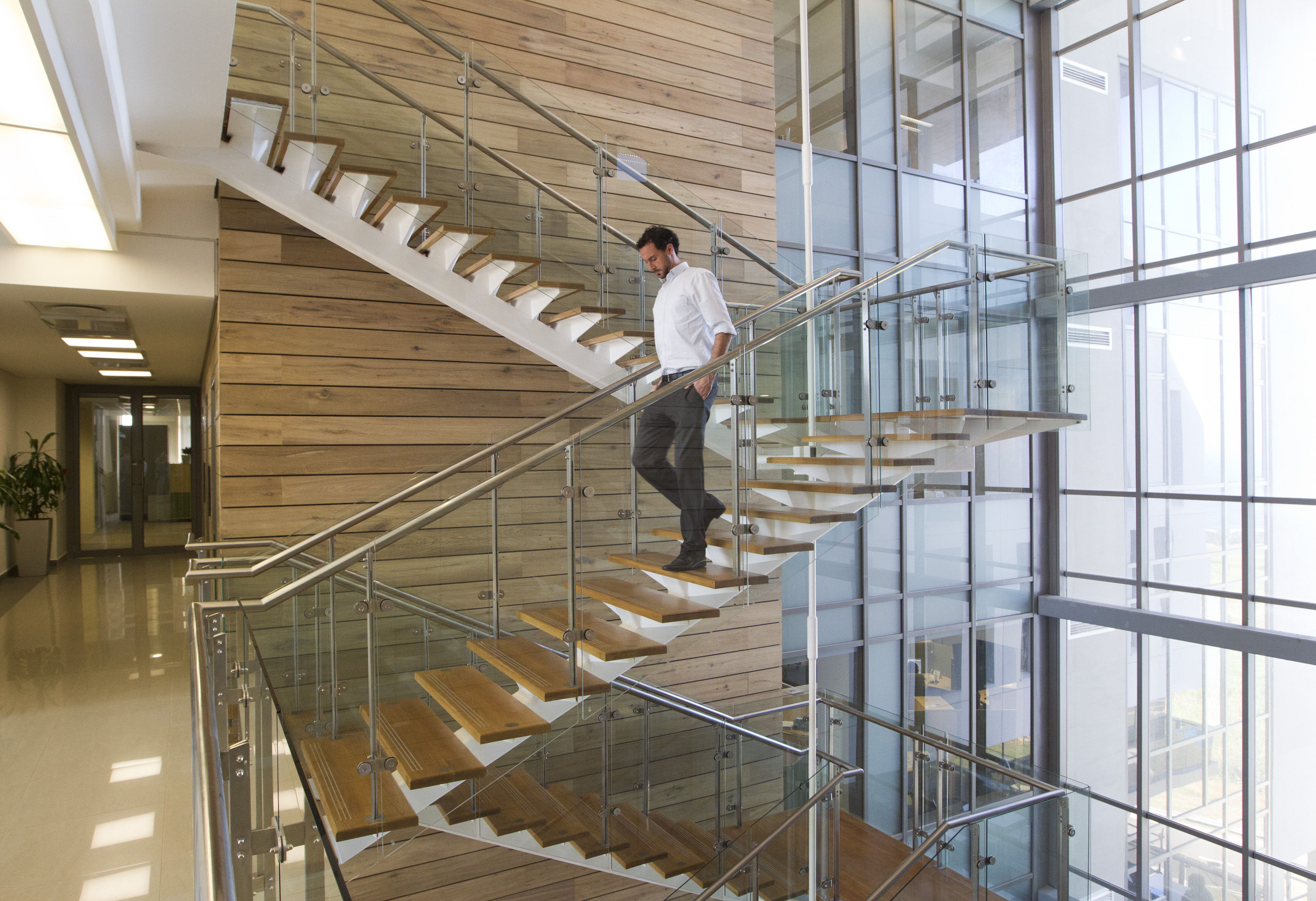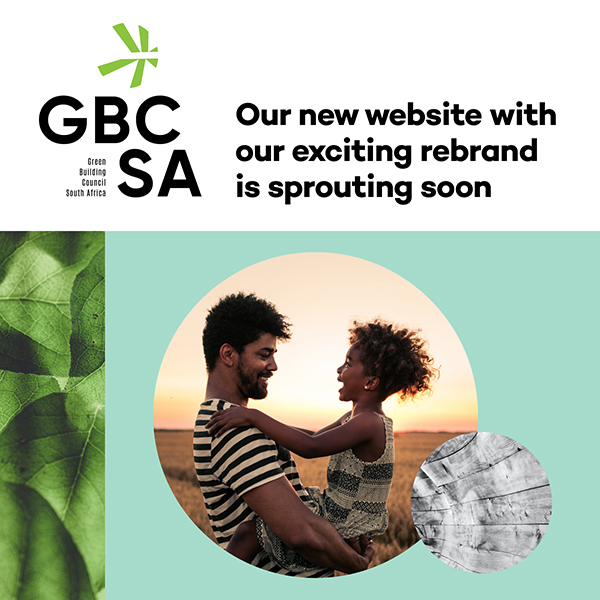
Why green building numbers keep going up – by Alan Cameron
June 22, 2018
Like energy drives movement, so energy from electricity enables economic growth. But South Africa uses more energy to do less when compared to similar developing economies, which means that we burn through much more energy to compete. And as our energy is often very dirty, this increase means the cost we extract from damaging our environment is far too high.
Buildings generate one third of all carbon emissions through their construction and operation, and the global, and local, construction sector is in dire need of reform. Almost half the planet’s energy and more than half our resources are used by buildings, which also account for 40% of end-user energy consumption and waste generation, and 12% of fresh water usage.
Each year global temperature records are broken, and unseasonal weather events caused by climate change are obvious, such as Cape Town’s millennium drought or unseasonal flooding in Gauteng and Durban.
Sprouting green shoots in the development sector
Since 1993 the Green Building movement started with the express intention of joining the dots between sustainable development and the building and construction sector. In 2007 the Green Building Council South Africa was formed, and today building green is now the domestic industry norm with almost 400 buildings certified, and counting.
Interestingly, focusing on energy, resource and environmental efficiencies throughout the design, construction and operational phases is gaining popularity each year – even in a consistently very low-growth economic environment.
This is because building green is not only the right thing to do to enable environmental transformation and social gains, but also to achieve economic impact with accelerated property values, reduced operational costs, higher rentals and, importantly, tenants who are able to provide a more comfortable, healthier and more productive space for their staff.
Green buildings out-perform non-green buildings in every area of benefit and match them on cost. MSCI and GBCSA’s joint green index proves green buildings deliver a better ROI than non-green buildings, almost double, based on financial data from actual buildings. The evidence that the number of global green buildings continues to double every three years proves the advantages are too valuable to ignore. In South Africa the cost premium of building green averages 5% and is decreasing rapidly.
How GBCSA keeps its rating tools’ edge
Green building rating tools are used to assess and recognise buildings which meet certain green requirements or standards. The GBCSA’s rating systems provide a reference point for all professionals on the team and a detailed set of standards for various aspects from energy, water, materials, indoor environment quality, transport, emissions, ecology and innovation for consideration, and allow the project design or operation to be independently assessed through the GBCSA’s certification process.
With certification the goal of sustainable design becomes more attractive to the client. Remember when attempts to be ‘green’ were met with skepticism and dispute? The GBCSA has succeeded in providing a system to ensure that what is set out in the design is built through a strict document tracking process that holds all parties accountable, as hoped by Mokena Makeka and Peta Blom in Sustaining Cape Town: Imagining a Livable City.
Rating tools vary in their approach and can be applied to the planning and design, construction, operation and maintenance, and renovation phases of a green building. Rating tools can also differ in the type of buildings they are applied to, with specific tools or subsets of tools used for different building types such as homes, commercial buildings or even whole neighbourhoods, including Green Star, Energy Water Performance (EWP) and EDGE.
The GBCSA is a member of the WorldGBC global network, which expects member rating tool’s development and implementation to be robust, transparent and to a best practice standard. In South Africa an independent and anonymous third party certification process has been implemented, based to a large extent on the ISO standard for certification bodies.
The Green Star certification standards for South Africa are developed by the GBCSA with support from industry experts who know how to apply such standards on real projects, to ensure that the standards are practically applicable. This ensures they unlock the social, environmental and economic gains for stakeholders involved in any one project
However, even before the standards are released to the industry, the GBCSA has a very robust level of governance and approval for which a board delegates oversight to a technical steering committee. Similar to other membership-based organisations, the GBCSA raises funds through sponsorship to amplify their impact but these sponsors are not able to influence the outcome of any one standard or rating tool. The open and transparent stakeholder engagement process and diligent governance structures is set up to guarantee this. As part of this, all minutes from stakeholder meetings on such rating tool development processes are shared with all stakeholders involved.
How to get your building certified
Buildings, interiors, residential units and precincts can be certified as the GBCSA continues to push the envelope to establish a ratings tool for every relevant context. Development projects use Accredited Professionals (AP) trained and accredited by the GBCSA to assist the project teams in assembling documentation which is then submitted digitally to the GBCSA for review. The AP is often a built-environment professional in their own right and are expected to conduct their work with integrity and honesty, with the GBCSA able to withdraw their accreditation if there is evidence that they have falsified documents or lied in a submission to the GBCSA.
The organization then appoints independent sector-based professionals, trained in certification standards, to confidentially review the submission and deliver a detailed review according to GBCSA standards. Typically there are two assessors, or an assessor and a moderator, to ensure that the assessment is thorough and double-checked.
The assessors provide detailed feedback on every item which the project documentation was not compliant with the GBCSA standard, and how to correct this. The GBCSA then undertakes a quality assurance review on the assessor comments, and issues them to the project as the final step in the first round of the assessment process.
Should revised documentation be necessary, the project teams work in their own time to make necessary changes to the design and prepare a new submission which is re-submitted to the GBCSA by the project’s AP. The assessors then review it and provide their final comments. The GBCSA again checks this to ensure these comments are in line with the set standards, and issues the final results, scoring the development project on the number of Green Stars it has achieved.
Importantly, the assessors are completely anonymous to project team members and are never in direct contact. Further, to maintain assessors’ independence, they are required to not engage with any projects directly related to the development project they are assessing or else the GBCSA will withdraw them, select new assessors for the project and could even litigate against them for reputational damage through the breach of contract.
Some leading international Green Building Councils have relaxed the distance created between assessors and projects, to allow projects to engage directly with assessors for more direct feedback loops, but the GBCSA has maintained the distance to retain the third party independence of the assessment process. This was felt still appropriate in the South African context where corruption is quite evident in many sectors. Despite this robust process, 99% of projects achieve their certification due to the active involvement of the Accredited Professional, the technical support by the GBCSA, and the clear guidelines set out for project teams.
Bringing out the Green Stars in your team
A knock-on effect of achieving a green building certification is that those involved often then become champions of the process and the impact, encouraging their teams to keep pushing the boundaries on sustainability. They assist the sustainable development sector by maintaining the demand for sustainable projects and products, and so set standards that then in turn elevate the ambition of government building codes and regulation, workforce training, and corporate strategies.
Responding to this demand, and the heightened urgency of the sustainable development sector’s view to protect and nurture the environment, the GBCSA’s Net Zero certification requires buildings to have zero carbon, water, waste and ecology impact on their environment. While logical, this is a giant leap from the construction sector’s status quo of emitting a third of global warming gasses, and using half the resources and available energy.
And, beyond the closed-loop of carbon-neutral building projects are those that are regenerative, and add capacity and increase the ecosystem that people rely on. The Net Zero and Net Positive certification tool for carbon, water, waste and ecology is part of this and pulls the industry towards the ultimate objective: to have a restorative impact rather than just doing less bad.
Leading from the front, the municipalities of Tshwane, Johannesburg, Durban and Cape Town are committed participants of the C40 Cities’ South Africa Buildings Programme. The intention is to accelerate the development and implementation of energy efficiency policies and programmes for all new buildings in SA cities to be Net Zero Carbon by 2030. The GBCSA is working closely with the C40 Cities team, and are hosting a number of events and workshops to engage with industry on this subject, including at the GBCSA’s annual convention in Cape Town on 3-5 October.
For more information on GBCSA rating tools: https://gbcsa.org.za/certify/
For more information on the Green Building Convention: https://gbcsaconvention.org.za/
Contact the GBCSA: [email protected]






